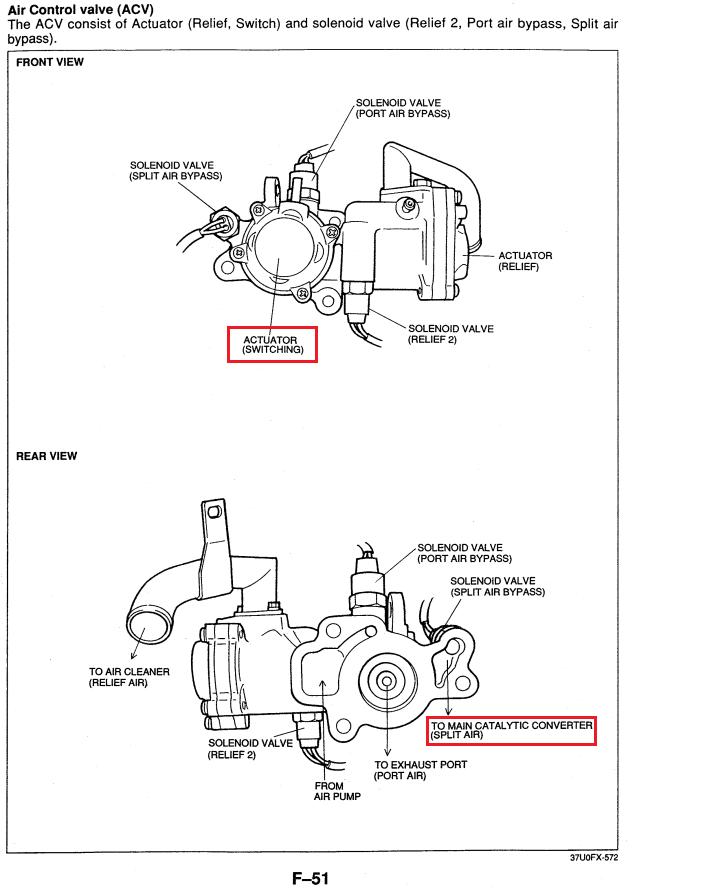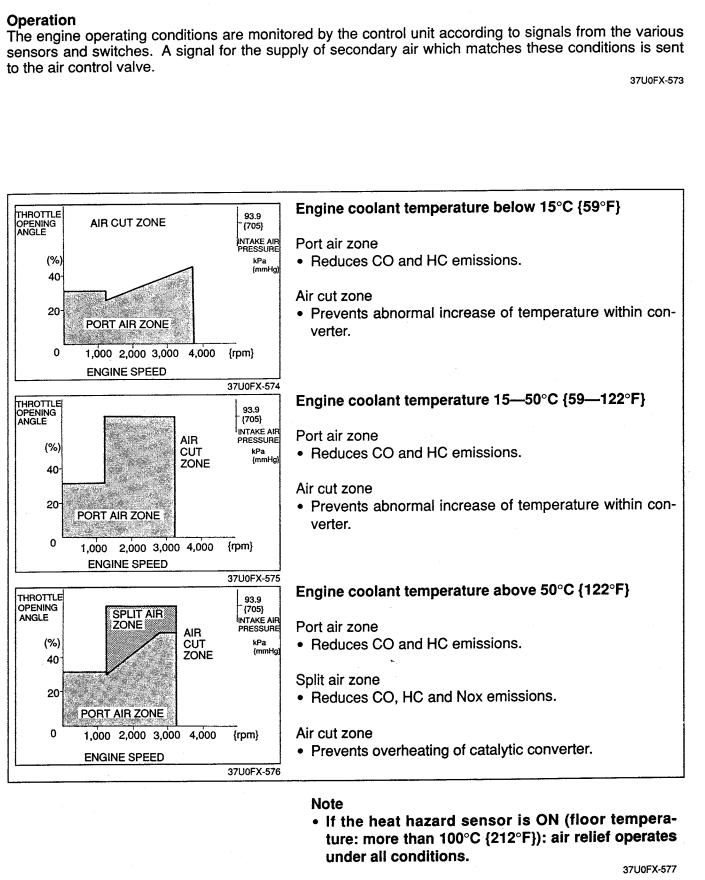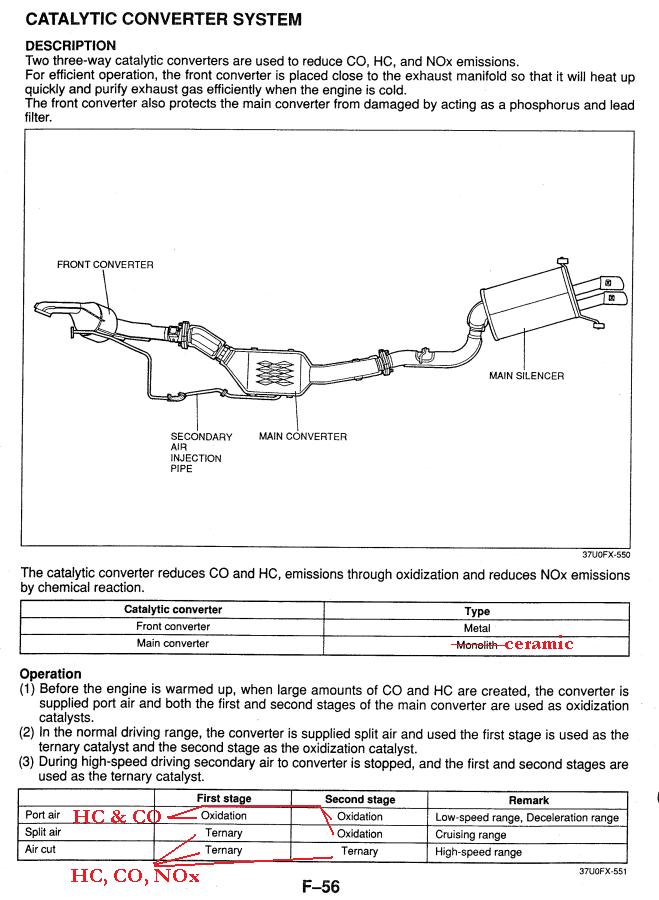Is possible to get allot of fumes with aip pump & HF cat?
#1
Thread Starter
Rotary Freak
iTrader: (22)
Joined: Feb 2001
Posts: 1,922
Likes: 2
From: Morris Plains, NJ USA
Is possible to get allot of fumes with aip pump & HF cat?
Ok guys I kind stumble on this issues, I did search forum but nothing correlated to my issues. Anyway upon starting up the car, let the car warm up and I still get bad fumes my air/fuel (aem wideband) read around 12.7- 11.8 it flucates between there at idle. I still have my high flow cat and airpump and acv hookup with the pipe to cat, the only way to stop the smell is if I go driving and come back and leave idling there is no more smell. Also I notice after I the drive car there is a discolor on my entine rear of the car, can it be it's getting too much gas or better running too rich? Usually balck exhaust tip show signs of running rich, my RB tips look normal greyish color. Any input appreciate.
Khris
Khris
#2
If you're getting that much soot on the back of the car, it's running too damn rich. Either the mixture is too rich or you're not getting enough spark to light off the mixture.
With a highflow cat, you'll get some stinkiness to the exhaust on a cold startup, but general driving should be fine.
Dale
With a highflow cat, you'll get some stinkiness to the exhaust on a cold startup, but general driving should be fine.
Dale
#3
I find it stinks when it first starts like Dale said. I too have a high flow cat and air pump. I hate backing my car out of the garage because it smells so bad.
I also have a sensitive noise though but it still stinks till it is warmed up.
As for the exhaust tips, my RB are black too......
I also have a sensitive noise though but it still stinks till it is warmed up.
As for the exhaust tips, my RB are black too......
#4
weird I also have really black exhaust tips. I think i can up the ante though, I have been starting my car while I have it stored, and there is a black patch developing on my driveway! I don't know if this is normal, but it almost looks like there are little bits being blown out the exhaust. oohh is really does smell bad!
#6
Rx7aholic,
I have RB duals as well. I've also used two different high-flow cats, but never got the black crap on my bumper. I never got a bad smell either, even last year when I had my leaking oil seals.
I didn't see an aftermarket ecu among your list of mods....
Following an oil change and new plugs, your car might want a new oxygen sensor. If the problem persists, your EGR valve is on its way out. If the car still smells, you may consider a new high-flow cat. Running rich over a length of time will decrease effectiveness of the metals in the cat.
Josh
I have RB duals as well. I've also used two different high-flow cats, but never got the black crap on my bumper. I never got a bad smell either, even last year when I had my leaking oil seals.
I didn't see an aftermarket ecu among your list of mods....
Following an oil change and new plugs, your car might want a new oxygen sensor. If the problem persists, your EGR valve is on its way out. If the car still smells, you may consider a new high-flow cat. Running rich over a length of time will decrease effectiveness of the metals in the cat.
Josh
#7
Thread Starter
Rotary Freak
iTrader: (22)
Joined: Feb 2001
Posts: 1,922
Likes: 2
From: Morris Plains, NJ USA
I guess I should have mention my mods and it was tune by KDR but that does not matter cause I just put in a rebuilt motor.
BNR stage 3 Turbos
Efini Y-pipe
Injectors-P=550/ S=1300.
Hks 3 inch downpipe
Bonez HF main cat
RB Catback
Large SMIC
Rx7 fashion intake / M2 style
Sard rising rate FPR
Power FC
double throttle system removed and other soleniond accept for the acv and fpr. Also when I put the new motor I send out the injectors to clean, new plugs (4-9's) and fuel filter, oil pressure sensor, oil level sensor, oil injectors and all new hose for heater and radiator and turbos. So in all it's buring rich? Does anyone know what should air / fuel ratio should be at idle? And which of the P's in the fuel setting I can lean it out for better air/ fuel ratio at idle? Also guys my exhaust tip is not black it's greyish.
Khris
BNR stage 3 Turbos
Efini Y-pipe
Injectors-P=550/ S=1300.
Hks 3 inch downpipe
Bonez HF main cat
RB Catback
Large SMIC
Rx7 fashion intake / M2 style
Sard rising rate FPR
Power FC
double throttle system removed and other soleniond accept for the acv and fpr. Also when I put the new motor I send out the injectors to clean, new plugs (4-9's) and fuel filter, oil pressure sensor, oil level sensor, oil injectors and all new hose for heater and radiator and turbos. So in all it's buring rich? Does anyone know what should air / fuel ratio should be at idle? And which of the P's in the fuel setting I can lean it out for better air/ fuel ratio at idle? Also guys my exhaust tip is not black it's greyish.
Khris
Trending Topics
#8
double throttle system removed and other soleniond accept for the acv and fpr.


Without the switching and relief solenoids, the ACV will default to split air directly to the cat. It should be running in port air, which requires vacuum to be applied to the switching actuator. Be aware though that an aftermarket cat, especially one with a metallic substrate, is never going to work as well as stock.
So here is your diagnosis procedure:
1) verify the air pump clutch is working properly
2) verify that air pump is working and air is coming out
3) figure out where the air is going. I suspect it is going right to the cat. It shouldn't, not at idle anyway.
4) the quick fix is to apply manifold vacuum to the switching actuator and leave the switching solenoid out of the picture.
#9
#10
If you're just trying to pass an emissions test you can run it right to the cat and that will usually get the job done. But that's not how the secondary air system is designed to work to minimize all the smell you are noticing. The air pump air goes to the ACV. The ACV is a series of valves which directs the secondary air. Most of the the time the secondary air should go to the exhaust ports to reduce the amount of unburnt fuel (HC emissions). Sometimes the ACV will direct it to the cat, but only under certain conditions.

The air is directed to the exhaust ports (port air) to maximize the oxidation process in the converter. There are two main processes in a converter:

1) Oxidation - where HC (unburnt fuel) and CO (partially burnt fuel) combine with oxygen to form water vaper and CO2. Oxidation works best when the AFR is leaner than 14.7:1
2) Reduction - where NOx (mostly from lean mixtures & high temp combustion) plus CO (partially burnt fuel) combine to form N2 and CO2. Reduction works best when the AFR is richer than 14.7:1.
Because one process requires a lean mixture and one process requires a rich mixture, closed loop control makes the AFR oscillate between slightly lean and slightly rich of the stoichiometric 14.7:1 ratio.
A pre-Renesis rotary engine has particularly high HC emissions due to the overlap between intake and exhaust stroke, so the secondary air system is optimized to mitigate this. Lots of fresh air is required to purify the exhaust of the unburnt fuel. The factory cat has two modes of operation: an oxidation mode (HC & CO only), which is initiated by the port air, and a ternary [meaning threefold] process for HC, CO, and NOx. The ternary process, where air is injected directly to the cat through the split air pipe, is mostly used during highway driving. At idle port air is active, the converter mostly processes HC & CO, and the pre-cat AFR should be heavily diluted (reading very lean).


The air is directed to the exhaust ports (port air) to maximize the oxidation process in the converter. There are two main processes in a converter:

1) Oxidation - where HC (unburnt fuel) and CO (partially burnt fuel) combine with oxygen to form water vaper and CO2. Oxidation works best when the AFR is leaner than 14.7:1
2) Reduction - where NOx (mostly from lean mixtures & high temp combustion) plus CO (partially burnt fuel) combine to form N2 and CO2. Reduction works best when the AFR is richer than 14.7:1.
Because one process requires a lean mixture and one process requires a rich mixture, closed loop control makes the AFR oscillate between slightly lean and slightly rich of the stoichiometric 14.7:1 ratio.
A pre-Renesis rotary engine has particularly high HC emissions due to the overlap between intake and exhaust stroke, so the secondary air system is optimized to mitigate this. Lots of fresh air is required to purify the exhaust of the unburnt fuel. The factory cat has two modes of operation: an oxidation mode (HC & CO only), which is initiated by the port air, and a ternary [meaning threefold] process for HC, CO, and NOx. The ternary process, where air is injected directly to the cat through the split air pipe, is mostly used during highway driving. At idle port air is active, the converter mostly processes HC & CO, and the pre-cat AFR should be heavily diluted (reading very lean).

#11
Thread Starter
Rotary Freak
iTrader: (22)
Joined: Feb 2001
Posts: 1,922
Likes: 2
From: Morris Plains, NJ USA
Hey Thanks for the input well the following has been verify they working normal and also both soleniod for the acv is hookup.>1) verify the air pump clutch is working properly
2) verify that air pump is working and air is coming out
3) figure out where the air is going. I suspect it is going right to the cat. It shouldn't, not at idle anyway.
Anyway only I need to do now is to apply your 4 suggestion and try to replace acv entire system mabye one of those valve might be malfunction.
Khris
2) verify that air pump is working and air is coming out
3) figure out where the air is going. I suspect it is going right to the cat. It shouldn't, not at idle anyway.
Anyway only I need to do now is to apply your 4 suggestion and try to replace acv entire system mabye one of those valve might be malfunction.
Khris
Thread
Thread Starter
Forum
Replies
Last Post




